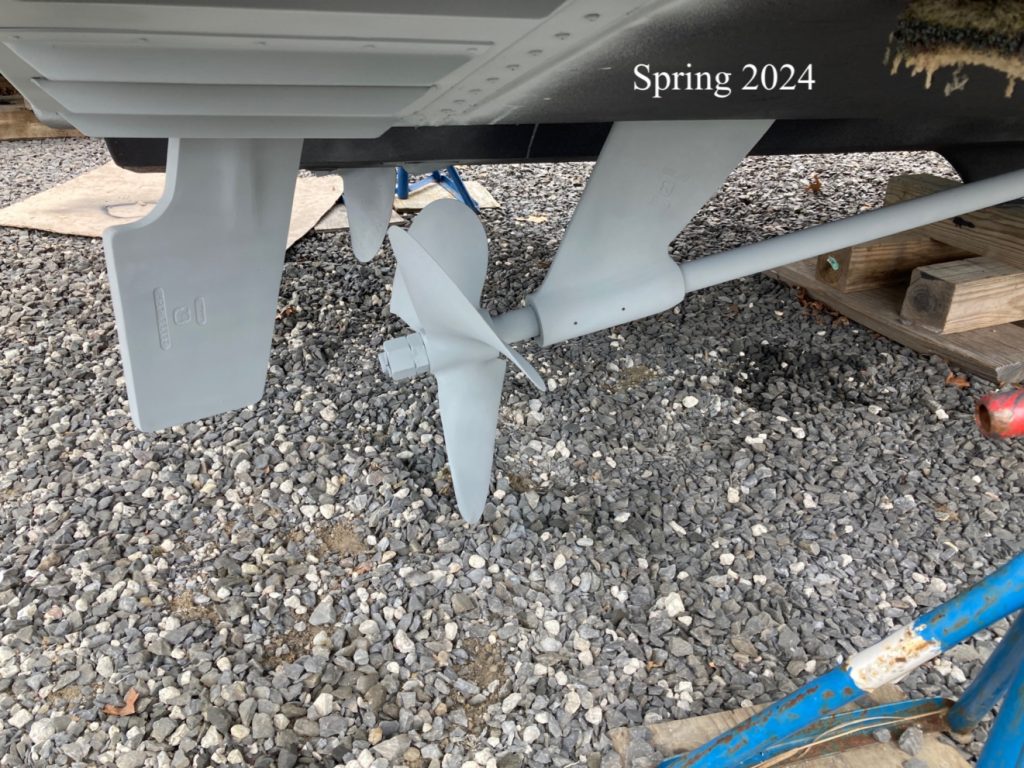So much is going on right now I feel like I can’t keep up with it all. I love the Fall season but at the same time feel a bit of a crush to get things done. Leaves start falling, slowly at first and then they become a constantly renewing ground cover requiring frequent removal. It’s worse this year because I put down more grass seed to make up for my lack of lawn care this summer (boating!) and the need to keep new seed uncovered from leaves.
And then there is the boat. One consistent theme I have is keeping the engine room clean to spot minor problems early before they become major issues. A few months back I had the starboard side raw water pump start leaking. I noticed it fairly quickly but thought it was such a small leak it could wait until I felt like dealing with it and we took the boat out for a day. When we got back, I took a look in the engine room and saw that the pump had started leaking badly and there was salt water and a black film over much of the engine block and mount and it quickly started to rust. It took a week to get the pump delivered to me from San Diego due to weather so I used that time to clean up that mess and paint it all.
Once I installed the pump and before I test-ran the engine, I took a sheet of aluminum foil and set it in such a way that if the new pump leaked it would act like an umbrella and divert the leaking water into the bilge and away from the engine mount or other components. With everything running fine and leak-free I took that aluminum foil and placed it under the port engine pump just in case that pump started leaking. I knew it was only a matter of time before it did leak but I had hoped to make it through the season before having to change it. Besides, they go on sale over the winter so I could save a few dollars!
This is when keeping the engine room clean comes into play. I always open the engine hatch and check the fluid levels, take a look at the engines and just make sure everything looks good in there. I would lay over the port engine to take a look at the water pump and that sheet of aluminum foil to see if there was a leak. One Friday afternoon in September we headed out to the boat to take a nice cruise. I open up the engine hatch and start checking the transmission fluid levels. While on the port side, I noticed a little bit of water standing along the port side engine stringer. I knew instantly what it was and confirmed it with a look at the water pump. The aluminum foil did its job though, keeping the engine free from any salt water and rust.

Wanting to get the pump here as soon as possible I called the pump manufacturer in San Diego and ordered a pump with expedited shipping. It would arrive by Monday evening which meant I could put it in on Tuesday. In the meantime, since I keep a toolbox on the boat, I removed the defective water pump and made it ready to install the new pump when it arrived. It all worked as planned, the new pump came later Monday and on Tuesday we went east, and I installed it. Having done the same job a few months back certainly helped it go easier, especially since the pump is on the outside of the port engine.
But the key point here is to open that engine hatch and look around. Keep it clean so you know what’s going on in there. You don’t have to be a mechanic to know that oil, water or other fluid in the bilge is not good.
While still in the water I empty the freshwater tank and using compressed air at a lower pressure blow out all the faucets, the shower, the head, and the windshield washer nozzles. Then I add eight to ten gallons of non-toxic antifreeze to the water tank. After that, I turn on the water pressure switch and open all faucets and freshwater systems one at a time until pink non-toxic antifreeze flows out.
I wish I had such a routine down pat for the running gear, props, struts, shafts, trim tabs and rudders. Last Spring was our first Spring with this boat. I spent the better part of the day under the boat scrapping the running gear, removing barnacles and painting the metals with zinc spray. I had great success with this method on our last boat keeping everything free from marine growth. It may be because we are now in a different part of the marina, or it could be from lack of use. Probably chalk it up to a combination of both.
For various reasons we did not get out as much this season, so we need to work on that. However, next season I am abandoning zinc spray and using a type of anti-fouling spray paint made for underwater metals. It’s getting to be a little too tough as I get older to take care of this stuff, so I am all for using everything at my disposal to win this battle!
